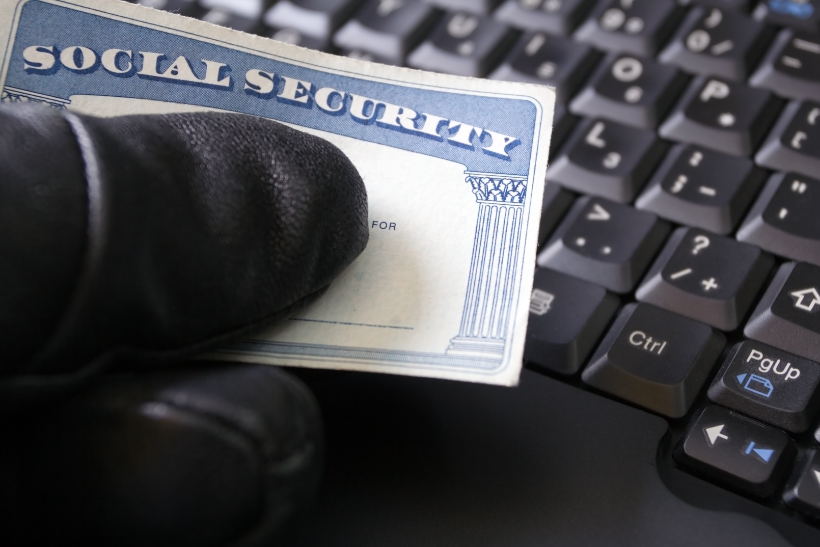
I mean, I wish my tax refund were big enough that I could be a target of tax refund theft.
IRS Identity Theft Affidavit Form 14039 is a powerful tool that protects you from the devastating consequences of identity theft and tax-related scams. This form serves the crucial purpose of alerting the Internal Revenue Service (IRS) about potential instances of identity theft, ensuring swift action to prevent further harm. Filling it out is an essential step in the process of identity verification and ensures a safer tax environment for all taxpayers.
What Happens If Someone Files a Tax Return Using Your Social Security Number
Identity theft is a serious concern, particularly when it comes to tax-related issues. One of the most alarming situations is when someone uses your Social Security number to file a tax return on your behalf. Specifically stolen identity refund fraud. This fraudulent activity means someone could steal your tax refund (if you were getting one) among other legal troubles.
The good news is that there are steps you can take to address this situation and protect yourself from further harm.
Who Should File Form 14039?
Form 14039, also known as the Identity Theft Affidavit, is a form that should be filed by taxpayers who have become victims of tax-related identity theft or who suspect they might be at risk. There are several circumstances in which taxpayers should consider filing Form 14039.
Firstly, if you receive a notification from the IRS indicating that a return has already been filed using your information, it is crucial to take immediate action. Filing Form 14039 will alert the IRS that you are a victim of identity theft, prompting them to take the necessary steps to resolve the issue and protect your tax information.
Additionally, if you receive a notice from the IRS instructing you to file Form 14039, it is important to follow these instructions promptly.
Benefits of Completing Form 14039
One of the most significant benefits of completing Form 14039 is the protection it offers against tax-related identity theft. When you file Form 14039, you can prevent fraudulent tax returns from being filed in your name. This form serves as a powerful tool to alert the IRS that your personal information has been compromised, giving them the necessary information to stop any unauthorized filings and prevent further damage to your financial standing.
Moreover, completing Form 14039 entitles you to seek assistance from the Identity Theft Victim Assistance organization. This organization is specifically designed to support you by offering guidance, resources, and expert advice to help you navigate the complex tax identity theft recovery process and maximize your chances of resolving the issue effectively.
When to File Form 14039
If you try to file your tax return electronically but the IRS denies it because someone already filed one with your social security number, you should file Form 14039 and attach it to your paper tax return. This tells the IRS that your personal information might have been compromised, and proactive action is necessary.
Another situation that warrants filing Form 14039 is when you receive a notice from the IRS instructing you to file it. The IRS may identify potential cases of identity tax scams and take the initiative to stop future tax identity theft. Typically by telling taxpayers to complete Form 14039.
If you notice suspicious or unauthorized activity related to your tax records, such as unusual notifications or discrepancies in your federal tax returns, take immediate action.
Signs of Tax Identity Theft
Tax identity theft is a serious crime that can have severe consequences for victims. It occurs when someone uses another person’s personal information, such as their Social Security number, to fraudulently file a tax return and claim a refund. In order to address this issue, the Internal Revenue Service (IRS) has introduced a process for identifying tax identity theft and providing assistance to victims. If you suspect you may be a victim of tax identity theft, you need to file Form 14039 and take appropriate action to protect your finances and personal information.
Common Identity Theft Indicators
Tax identity theft occurs when someone uses your Social Security Number (SSN) to file fraudulent tax returns and claim refunds. It is important to recognize the warning signs of tax identity theft to protect yourself from becoming a victim.
One of the most common signs is receiving a notice from the IRS stating that multiple tax returns have been filed using your SSN. This indicates that someone may have stolen your identity and filed fake tax returns to receive refunds. Another red flag is receiving notices from the IRS claiming that you owe additional taxes for years when you did not file a tax return. This suggests that someone has used your SSN to file a fraudulent return and underreported their income.
Additionally, the IRS may alert you to wages earned from unrecognized employers. This is a sign that someone may have used your SSN to gain employment and have their wages reported under your name. These indicators are clear signs that your identity may have been stolen for tax-related purposes.
If you suspect that you are a victim of tax identity theft, it is crucial to take immediate action. Contact the IRS and report the issue, file a police report, and consider placing a fraud alert on your credit report.
How to Verify Tax Return Information
Verifying tax return information is an essential step in detecting and preventing tax identity theft. Here are the steps to take and the information to look for when conducting this process:
- Compare return data: Carefully review your tax return information, including your income, deductions, and credits. Ensure that the numbers reported accurately reflect your financial situation.
- Check personal information: Verify that your name, Social Security number, and current mailing address are correct on your tax return. Any discrepancies or outdated information could be a sign of fraudulent activity.
- Confirm filing status: Ensure that your tax return reflects the correct filing status for your situation (e.g., single, married filing jointly). A sudden change in filing status without your knowledge could indicate unauthorized file manipulation.
- Review tax records: Compare your current tax return with previous years’ filings. Look for any inconsistencies or major deviations in reported income, deductions, or other relevant tax information.
- Monitor for duplicate returns: Be vigilant for any indication that a duplicate return has been filed using your information. If you receive multiple notices from the IRS regarding duplicate filings, it could be a sign of questionable activity.
What to Do if You Suspect Tax Identity Theft
If you suspect tax identity theft, it’s important to take immediate action to protect yourself and resolve the issue. Here are the steps you should follow:
- File a complaint with the Federal Trade Commission (FTC): The FTC is the leading agency that handles identity theft cases. By reporting your suspicion to them, you can help stop the identity thieves and assist in their investigation.
- Contact the major credit bureaus: Reach out to one of the three major credit bureaus (Equifax, Experian, or TransUnion) and place a fraud alert on your account. This alert will notify lenders and creditors to take extra precautions when verifying your identity.
- Fill out IRS Form 14039, the Identity Theft Affidavit, and submit it with your paper tax return.
Filling Out Form 14039 and Submitting It
Filing out Form 14039, also known as the Identity Theft Affidavit, is a crucial step in the process of resolving tax-related identity theft issues. This form is provided by the Internal Revenue Service (IRS) and is specifically designed to report any fraudulent activity on your tax returns.
By completing Form 14039 and submitting it to the IRS, you can alert them to the identity theft and begin the process of resolving the issue. This step is essential in not only protecting your financial well-being but also in helping the IRS investigate and stop the identity thieves.
Gather Required Information
When completing Form 14039, “Identity Theft Affidavit,” there is certain information that is needed in order to effectively provide the necessary details. The required information includes the individual’s name, current mailing address, Social Security number, relevant dates (such as when the individual filed their tax return), the nature of the issue being reported, and any supporting documentation that may be available.
There are several situations that may warrant filing Form 14039. One such situation is if the individual is unable to file their tax return electronically due to being a victim of identity theft. Additionally, if the individual receives a notice from the IRS stating that there is suspicious or fraudulent activity on their tax return, they may need to file Form 14039.
Sections of Form 14039
Section A of Form 14039: Identity Theft Victim Information
In this section, the individual needs to provide their personal information, including their name, social security number, current mailing address, and relevant dates related to their identity theft incident. The purpose of this section is to establish the identity of the victim and provide the necessary contact information.
Section B of Form 14039: Identity Theft Indicator
The individual needs to check the appropriate box in this section to indicate whether they have received a notice from the IRS regarding suspicious or fraudulent activity on their tax return. The purpose of this section is to notify the IRS that the individual believes they have become a victim of tax-related identity theft.
Section C of Form 14039: Declaration of Identity Theft
This section requires the individual to provide a statement under penalty of perjury that they are a victim of identity theft and that they have not yet filed a tax return with the IRS. The purpose of this section is to confirm the individual’s identity theft status and declare that they have not yet filed their tax return.
Section D of Form 14039: Signature and Certification
In this section, the individual needs to sign and date the form to certify that the information provided is true, correct, and complete to the best of their knowledge. The purpose of this section is to confirm the individual’s consent and agreement with the information provided on the form.
Section E of Form 14039: Spouse Information
This section is only required if the individual is filing Form 14039 on behalf of their spouse. It requires the same personal information for the spouse as provided in Section A. The purpose of this section is to report the identity theft incident for both the individual and their spouse if applicable.
You Filed Form 14039. What Happens Next?
After submitting Form 14039, the IRS takes several steps to address the identity theft incident. First, they will send an acknowledgement letter confirming that they have received your form. This letter serves as proof that the individual has reported the identity theft to the IRS.
The IRS will then forward the individual’s information to the Identity Theft Victims Assistance organization for investigation. This organization specializes in handling identity theft-related issues and will work to resolve the case.
The investigation will involve checking for fraudulent tax returns filed under the individual’s name and social security number. If any fraudulent returns are identified, the IRS will take appropriate actions to resolve the issues it caused and enact an identity theft recovery plan and ensure that the taxpayer’s future returns are not affected.
In some cases, the individual may be placed in the Identity Protection PIN program. This program provides an additional layer of security by assigning a unique six-digit number to the taxpayer. This number must be included on future tax returns to verify the taxpayer’s identity and prevent further fraudulent activity.

Jessie Seaman
Jessie Seaman, Esq. & EA, is a Florida attorney and IRS Enrolled Agent with over 12 years of experience in state and federal tax controversy resolution. Passionate about helping individuals and businesses navigate complex tax challenges, Jessie combines her legal expertise with a dedication to education, often mentoring future tax professionals and speaking at national conferences. A double major graduate from the University of South Florida and a Juris Doctor recipient from Florida Coastal School of Law, she has overseen tens of thousands of tax resolution cases, from simple privacy plans to high-profile matters. Jessie currently resides in Chicago, enjoying outdoor adventures with her Pomsky, Fisher.







